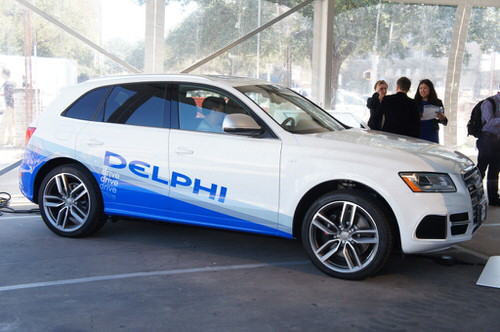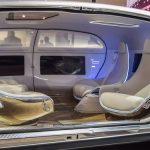Self-driving boom shakes money tree for Delphi
Self-driving boom shakes money tree for Delphi1

Even though regular people won’t be driving autonomous cars for a long time, Delphi Automotive is already reaping the benefits from the concept.
Of the company’s anticipated global sales of $ 16.2 billion to $ 16.5 billion this year, sales of active-safety equipment, including radar and cameras to help avoid collisions, are estimated to reach $ 350 million. According to Delphi CEO, Kevin Clark, those revenues are increasing by 50 percent per year.
See Also: Which cities are leading the autonomous car revolution?
Delphi, and partner Quanery Systems Inc., will soon be introducing a lidar unit that emits pulses of light to figure out an object’s distance, for automakers that want a safer variety of sensors on their autonomous vehicles.
“It’s real money,” Clark states. “It’s something that consumers want, and it’s something they’re willing to pay for.”
When recently asked about his plans for emerging technologies, such as lidar and 48-volt electrical systems, during an interview with Staff Correspondent, David Sedgwick, Clark shared some great information.
When it comes to defining active safety, Delphi’s current primary focus is radar and vision systems, but not lidar just yet. The solid-state lidar unit is estimated to be commercially available sometime in 2021 or sooner, if automakers get on board early.
Delphi has plans to launch a fleet of autonomous cars for a ride-hailing service next year, in Singapore. Similar vehicles to these are set to be on display at the upcoming Consumer Electronics Show in January.
As far as sensors go, Delphi thinks that consumers need vision, radar and lidar. This ensures that in all environments, optimal data is being gathered. Going off the assumption that automakers will want four lidars per vehicle, the cost per vehicle will be about $ 1000, since each one will cost around $ 250, for typical consumers.
Delphi looks to future growth
When asked if active safety is Delphi’s largest generator of sales growth, Clark explains, “To be honest, we have several. We’re focused on three primary areas that we call “Safe, Green and Connected.” Those categories touch our three main product segments: electrical architecture, powertrains and electronics. How do you make cars safer? How do you reduce carbon dioxide emissions and increase fuel economy? And how do you increase connectivity?”
Within those categories, Delphi has some components that are generating the most sales growth. These are powertrains and power electronics for electric vehicles. Delphi has actually been awarded three programs for 48-volt systems, and two will launch next year. Delphi is responsible for the inverter and the power electronics on these 48-volt systems. It is likely that 15 percent, or more, of vehicles produced in 2025 will be equipped with 48-volt systems.
In response to the growth and demand, Delphi plans to double the amount of software and systems engineers it currently has. Right now, there are 20,000 engineers and 5,000 are software and systems engineers.
All in all, Delphi is doing really well, and looking at incredible growth over the next few years.
The post Self-driving boom shakes money tree for Delphi appeared first on ReadWrite.
(53)













